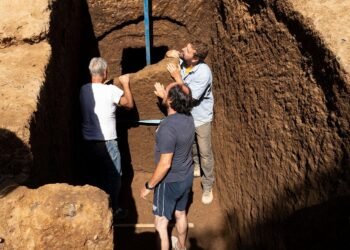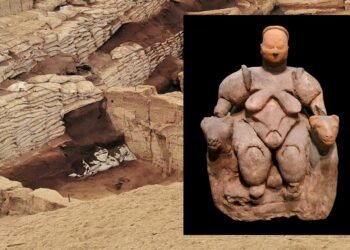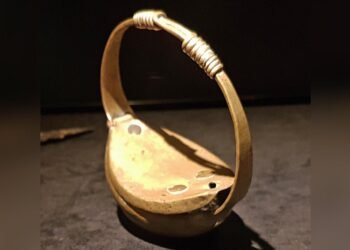DNA extracted from ancient chewing gum, used by teenagers in Sweden around 10,000 years ago, is providing valuable insights into the Stone Age diet and oral health.

The tar-like black resin, made from birch bark pitch, was found 30 years ago at the Huseby Klev archaeological site near Gothenburg, Sweden. The gum, thought to have been chewed for its adhesive properties in tool and weapon making, presented clear teeth marks and was a common practice among both male and female teenagers.
Anders Götherström, co-author of the study and professor of Palaeogenetics at Stockholm University, suggested, “They could have been chewed just because they liked them or because they thought that they had some medicinal purpose.”
A 2019 study mapped the genetic profiles of the individuals who chewed the gum, while the recent research, led by Götherström and his team, delved deeper into the DNA found in the gum. The analysis revealed a Stone Age diet comprising deer, trout, hazelnuts, along with traces of apple, duck, and fox. The ability to extract DNA from the chewing gum offers information not attainable through traditional methods like bone or teeth analysis.
Dr. Andrés Aravena from Istanbul University, who worked on the study, highlighted the computational challenges in identifying the different species mixed in the DNA. “We had to apply several computational heavy analytical tools to single out the different species and organisms,” he stated, emphasizing the innovation required to adapt existing tools for ancient DNA analysis.
One significant revelation from the study was the identification of a teenage girl with severe periodontitis, a gum infection, through the bacteria found in the gum. Götherström commented, “She would probably start to lose her teeth shortly after chewing this gum. It must have hurt as well.” The imprint of the teenager’s mouth preserved in the gum provides a poignant connection between artifacts, DNA, and human experiences.
Lisa Matisoo-Smith, a molecular anthropologist at the University of Otago, noted that this approach allows for genomic studies without destructive sampling of human remains, opening new avenues for understanding ancient populations.
 The study also contributes to the broader archaeological understanding of toolmaking practices. The team reports that “Adult tooth impressions have also been found in pitch from the site, which could suggest an egalitarian toolmaking process involving all sexes and ages.”
The study also contributes to the broader archaeological understanding of toolmaking practices. The team reports that “Adult tooth impressions have also been found in pitch from the site, which could suggest an egalitarian toolmaking process involving all sexes and ages.”
While the gum was likely used in toolmaking, the absence of embedded tools in the pitch raises the possibility that some individuals may have simply chewed it as a form of ancient gum. Matisoo-Smith commented, “Either way, it’s pretty cool.”
The results of the study have been published in the journal Scientific Reports.
























